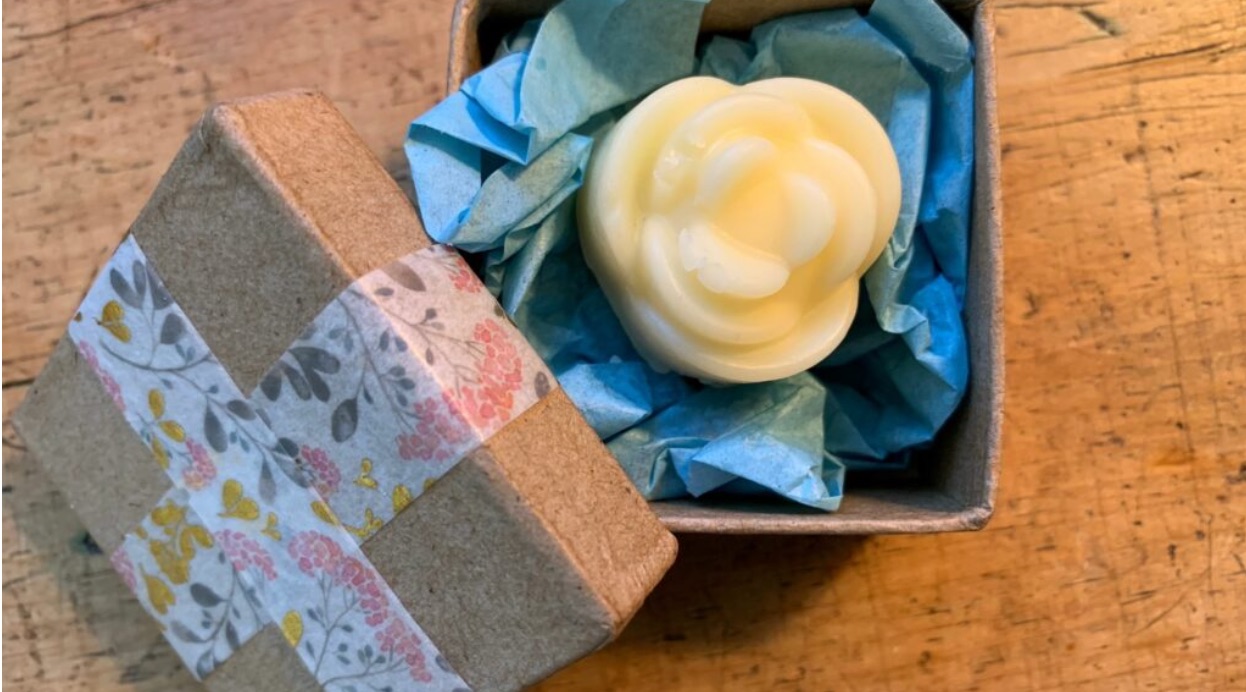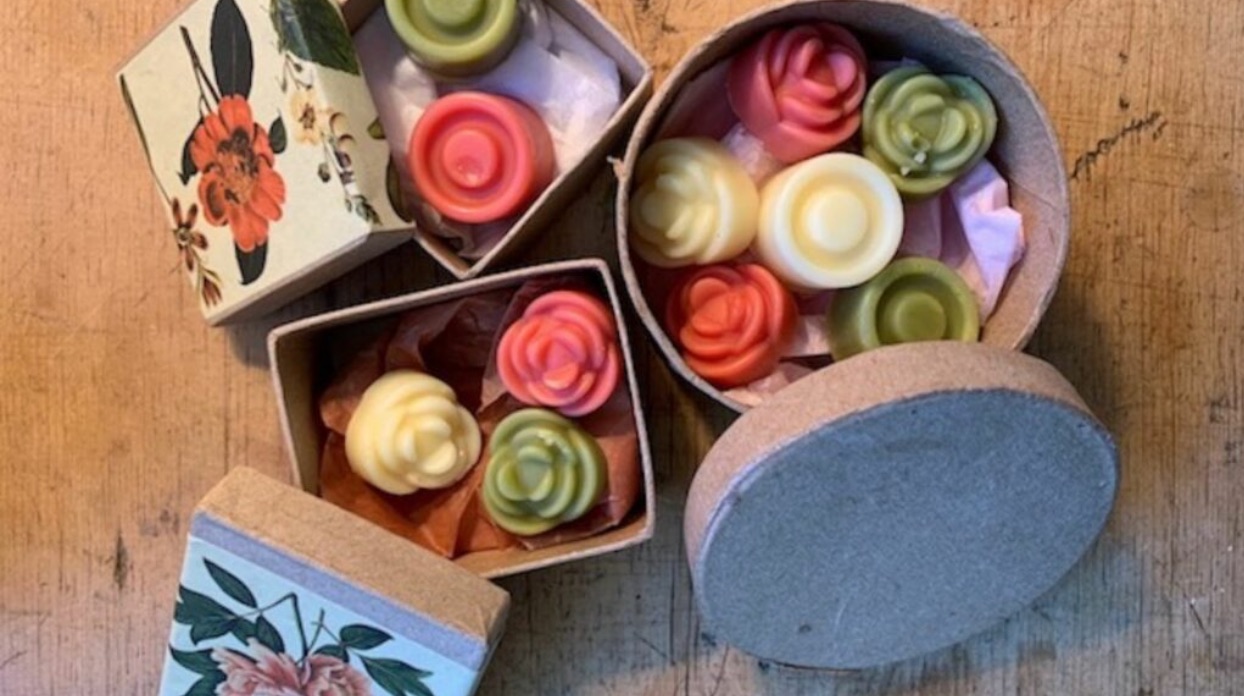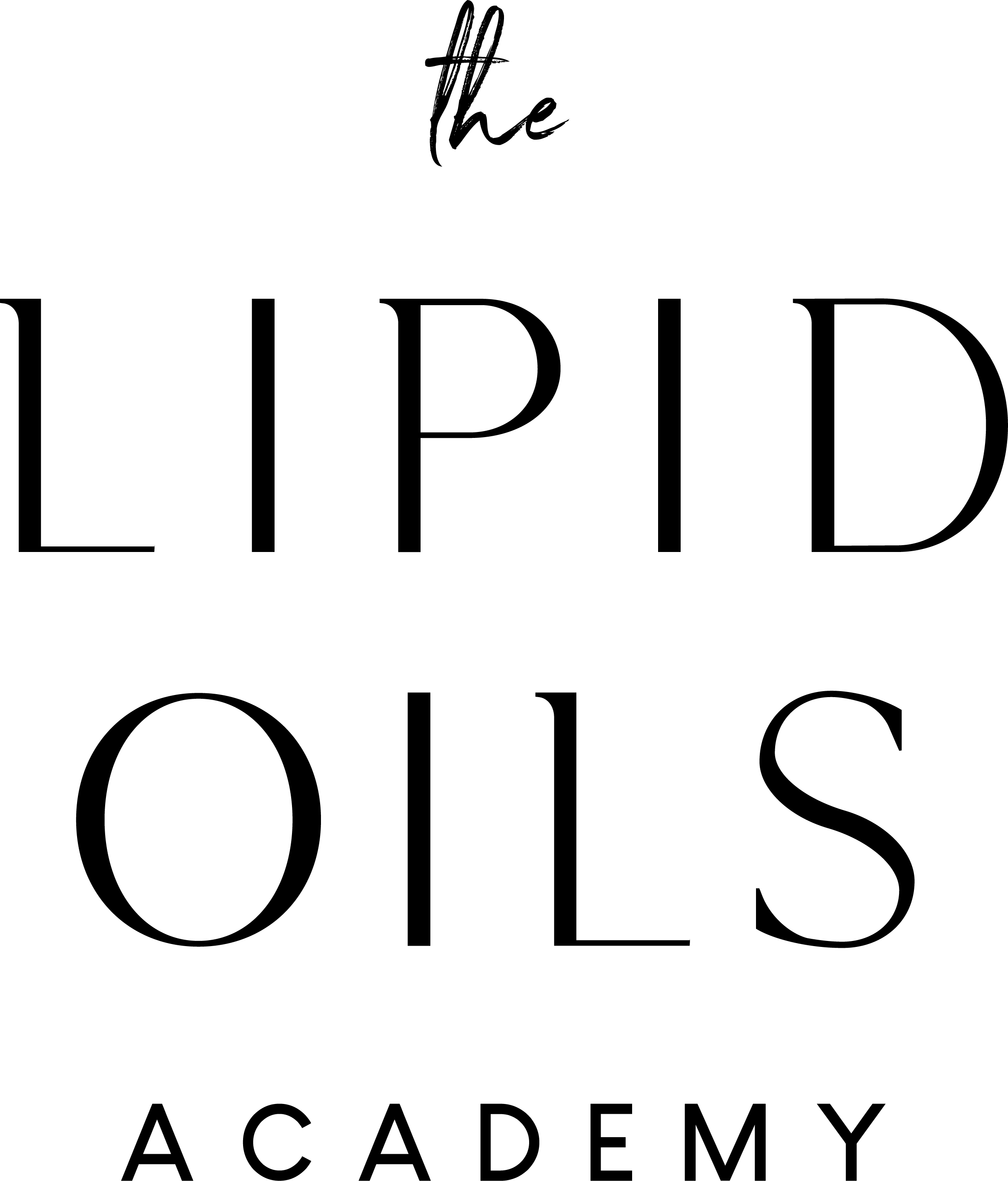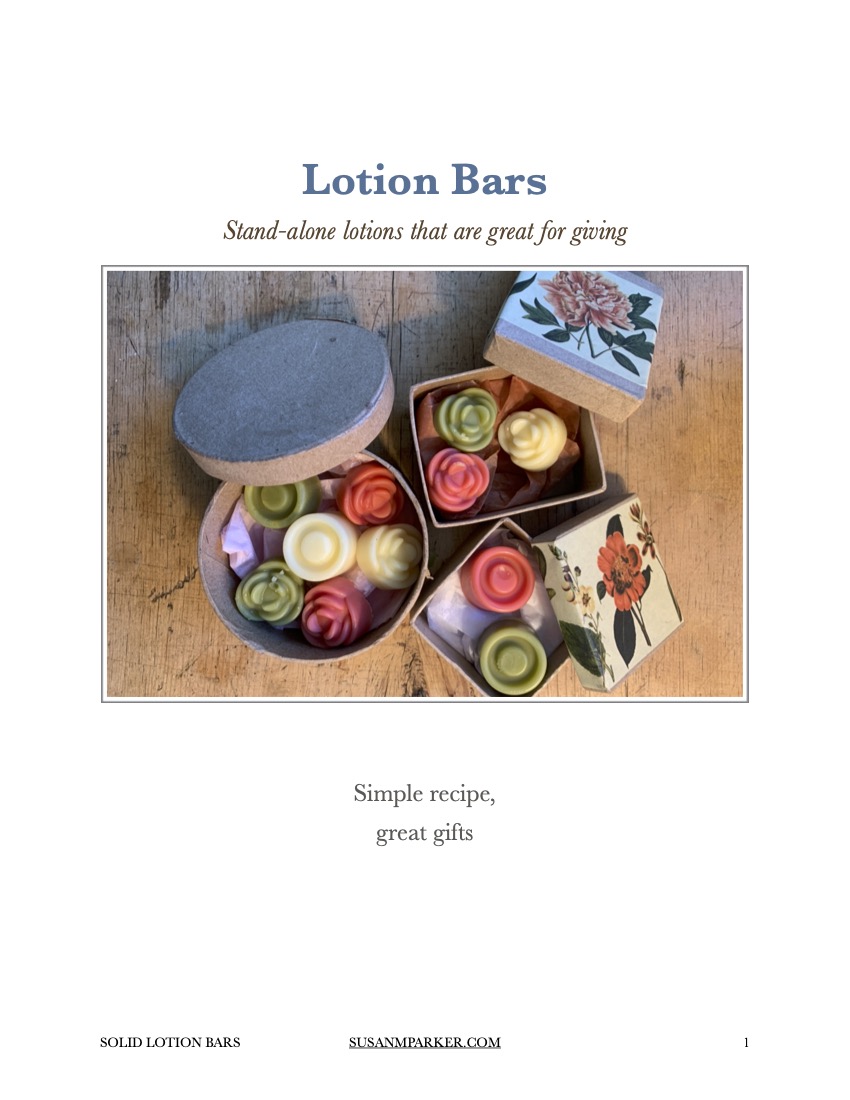One of the easiest balms to make using the wide range of lipid compounds, oils, butters, and waxes are stand-alone Lotion Bars.
These lotions do not need a jar or tin to hold them and are infinitely variable using a few supplies, and are simple to make.
The recipe breaks the ingredients into thirds;
1/3 liquid oil
1/3 plant butter
1/3 beeswax
Here’s a simple recipe I put together with camellia seed oil, kapangna butter, and beeswax. For scent, I used a lavender absolute.

Melt the oil, butter, and wax together and pour into silicone molds. Once fully cooled and hardened, the lotion bars can be popped out of the molds and wrapped for gift giving.
To begin, you’ll need one or more silicon molds. The molds can be found in kitchen supply stores or bought on the internet. Sometimes they are called candy or chocolate molds and can be found in a wide range of shapes, flowers, hearts, circles, and squares.
These rubber-like molds will give you a beautiful-looking balm with ease. You just need to fully cool and harden the lotion balm for clean removal from the mold.

Technique;
Melt the wax first, gently over low heat to fully melt the wax. Then add the butter and gently melt into the wax. Finally, add the liquid oil.
When all are melted together, giving it a good stir so that the different elements are fully combined, add the scented material.
Pour the mix into each cavity of the silicon mold and let set.
If placed on a tray, the mold can be placed in the fridge or freezer for faster cooling. It is important that the lotion is fully cooled and hardened or it won’t fully release from the mold.
Playing with color and natural pigments;
Working with the natural pigments in some carrier oils and butters, along with infusions.
Below are three combinations working with different pigments in the oils and infusions.

In the image above, the green lotion bar is made with 1/3 beeswax, 1/3 green unrefined sal butter and 1/3 infused violet leaves in sesame oil which is also very green. And this is scented with fragrant rose wax.
The pink one is 1/3 beeswax, 1/3 kpangnan butter, and 1/3 raspberry seed oil with a small amount of alkanet root infused in sesame for color. This is scented with tuberose fragrant wax.
And for contrast, the white one is unscented beeswax, murumuru butter, and meadowfoam seed oil, one-third each.
Notes;
You can replace the beeswax with a plant-based wax to make a vegan salve.
Scent, color, all the different carrier oils, and saturated plant butters, and infused oil possibilities make for nearly limitless opportunities in formulating.
What are you working on? Leave a comment below


Thank you for your recipe. Do you have a recipe for a facial cleanser, that can be used on very sensitive skin?
I have a granddaughter with very sensitive skin. is this a cleansing bar she could use to wash with?
How long does the Lotion bar last? How should it be stored and used?
Can essential oils be added as the fragrance instead of an absolute? If so, is there a particular oil you would recommend for the scent? Not sure how the chemistry of certain oils would play into the “setting up” of the lotion.
Sure – add essential oils, leave out the fragrant waxes – whatever you want to experiment with. I love the simplicity of one-third of each ingredient – the rest is for your imagination. There is no magical chemistry for the butter and wax to set – any combination will work – you will have slightly different outcomes depending on the melting points of the ingredients you choose.
Thanks a lot for so marvellous recipe
how much floral wax should be added into the lotion bar? and does any other ingredient need to be put less when floral wax is added? thanks Susan!
Hi Theresa, this is very hard to answer as you are using this for the scent and they vary so widely in strength that no single amount will work in all cases. If what you have is very strongly scented use just a little and if weak add more.
Thank you for such a simple, effective formulation! Unfortunately, kpangnan butter is not available where I live. Could you suggest an alternative butter that will result in a somewhat similar outcome – a bar that is not too greasy? Thank you.
Hi Joanne, any butter will work – mango butter is pretty common, and a dry butter, also murumuru, illipe, and kokum. Shea butter works too but is not as dry feeling.
The reasons of melting the bees wax first then the butters and afterwords adding the oils is that to prevent of effecting the properties of the ingredients?
Can oils with iodine value above 100 be added at a temperature of melting point 65C as the bees wax ?
I like to melt the highest melting point ingredients first, the waxes, then add butters and, finally oils.
The trick working with high iodine values oils is to work quickly – melt them all together and pour them into the molds – then I like to put the molds in the refrigerator or freezer for a hard cooling down which helps pop out the final forms better. – Be sure and put the molds on a small board so you can transport them without spilling.
This formulation could not be easier. 3 equal parts of oil, wax and butter. And that’s it. Thank you, Susan, for an exceptionally uncomplicated beginning to product-making!
I know Cyrene, – it’s one I can easily remember, and the possibilities are endless.
Thank you! How would emulsifying wax work for this? Would it be too soft?
That is a different kind of wax – beeswax, candelilla, rice bran, and
sunflower waxes will work.
Thank u